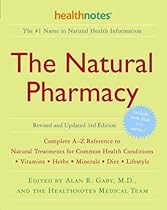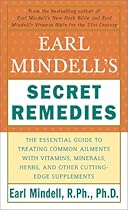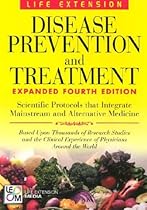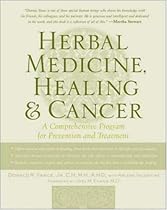volker schulz and Rudolf Hansel
See book keywords and concepts |
 A recent randomized placebo-controlled open clinical trial tested the influence of daily doses of mixtures of isoflavones from red clover (Trifolium pratense) on arterial compliance, an index of the elasticity of large arteries, in 17 (14 active, 3 placebo) menopausal women. After a 5-week run-in period, the active group took 2 placebo tablets daily for 5 weeks, then one 40 mg isoflavone tablet and 1 placebo daily for the next 5 weeks, and then 2 80 mg isoflavone tablets daily for the final 5 weeks. A recent randomized placebo-controlled open clinical trial tested the influence of daily doses of mixtures of isoflavones from red clover (Trifolium pratense) on arterial compliance, an index of the elasticity of large arteries, in 17 (14 active, 3 placebo) menopausal women. After a 5-week run-in period, the active group took 2 placebo tablets daily for 5 weeks, then one 40 mg isoflavone tablet and 1 placebo daily for the next 5 weeks, and then 2 80 mg isoflavone tablets daily for the final 5 weeks. |
| Phytoestrogens
A number of plants contain isoflavones with estrogen-like properties (Kitaoka et al., 1998). Certain leguminous herbs, including soybeans and red clover, are very rich in these compounds (Zava et al., 1998). The dietary intake of plant estrogens varies greatly in different geographic regions. It is estimated, for example, that dietary phytoestrogen intake is up to 30 times higher in Eastern Asia than in Europe and North America. |
Kaayla T. Daniel, PhD, CCN
See book keywords and concepts |
 HALF LIVES
In general, concentrations of daidzein and genistein in the blood peak within six to eight hours after eating. Plasma concentrations begin to rise within two hours but can occur within 15 minutes
MY SOY STORY; EARLY ALZHEIMER'S
I am an executive secretary but almost lost my job during my mid-50s because I developed Alzheimer-like symptoms. I became extremely forgetful, to the point of not knowing what to do or say when I answered the phone. I once found myself walking across the street with heavy traffic coming towards me and not knowing how I got there. HALF LIVES
In general, concentrations of daidzein and genistein in the blood peak within six to eight hours after eating. Plasma concentrations begin to rise within two hours but can occur within 15 minutes
MY SOY STORY; EARLY ALZHEIMER'S
I am an executive secretary but almost lost my job during my mid-50s because I developed Alzheimer-like symptoms. I became extremely forgetful, to the point of not knowing what to do or say when I answered the phone. I once found myself walking across the street with heavy traffic coming towards me and not knowing how I got there. |
Alan R. Gaby, M.D., Jonathan V. Wright, M.D., Forrest Batz, Pharm.D. Rick Chester, RPh., N.D., DipLAc. George Constantine, R.Ph., Ph.D. Linnea D. Thompson, Pharm.D., N.D.
See book keywords and concepts |
 Other constituents include aromatic acids, tannins, resins, fatty acids, starches, and sugars. As a woman approaches menopause (page 311), the signals between the ovaries and pituitary gland diminish, slowing down estrogen production and increasing luteinizing hormone (LH) secretions. Hot flashes can result from these hormonal changes. Earlier animal studies4'5 and a human clinical trial6 suggested that black cohosh had some estrogen activity in the body and also decreased LH secretions. Other constituents include aromatic acids, tannins, resins, fatty acids, starches, and sugars. As a woman approaches menopause (page 311), the signals between the ovaries and pituitary gland diminish, slowing down estrogen production and increasing luteinizing hormone (LH) secretions. Hot flashes can result from these hormonal changes. Earlier animal studies4'5 and a human clinical trial6 suggested that black cohosh had some estrogen activity in the body and also decreased LH secretions. |
Josef A. Brinckmann and Michael P. Lindenmaier
See book keywords and concepts |
 The drug also contains flavonoids and especially isoflavones (irilone, irisolone, irigenin and tectoridin, among others) [2, 3]. A number of unusual mono-, bi-and spirocyclic triterpenoids, known as "iridals" occur as well [4—7]; a typical compound of this group is (+)-y-iriger-manal. C-glucosylxanthones have also been detected [3].
Indications: The drug is mainly used in folk medicine as an expectorant and demulcent for common cold and catarrhal conditions. The drug also contains flavonoids and especially isoflavones (irilone, irisolone, irigenin and tectoridin, among others) [2, 3]. A number of unusual mono-, bi-and spirocyclic triterpenoids, known as "iridals" occur as well [4—7]; a typical compound of this group is (+)-y-iriger-manal. C-glucosylxanthones have also been detected [3].
Indications: The drug is mainly used in folk medicine as an expectorant and demulcent for common cold and catarrhal conditions. |
| Recent studies indicate that the isoflavones are responsible for its effectiveness; genis-tein has diuretic activity comparable to
Fig. 3: Transverse surface of Ononis spinosa root, showing the whitish medullary rays and large vessels (arrow).
Fig. 4: Finely curved needles of the micro-sublimate (onocol). furosemide [9]. Isolated medicarpin has been shown to inhibit 5-lipoxygenase selectively [7]. Spinonin, isolated from O. spinosa subsp. leiosperma, has antibacterial activity [6].
In folk medicine, restharrow root is also used for gout and rheumatic complaints. |
| A considerable radical scavenging effect has been demonstrated for isolated chalcones, isoflavones and isoflavanes from licorice root (literature cited in [1]). Recent studies have shown that the isoflavane glabridin in particular has significant antioxidant capacity against LDL oxidation, which is considered to be of crucial importance in the genesis of early arteriosclerotic damage. For the use of licorice root in the treatment of liver diseases, see [30], and for the choleretic action of individual constituents, see [31]. |
| A) and isoflavones (with glabrol, formononetin etc.) also occur in the drug along with prenylated o
Liquiritigenin : R = H
Liquiritin : R = Glucose
Isoliquiritigenin : R = H
Isoliquiritin : R = Glucose
H3C COOH
Glycyrrhizic acid isoflavanes (including glabridin, licoricidin, hispaglabridin A and B), isoflav-3-ene (such as glabrene) and pterocarpans [6]. Coumarins with umbelliferone and herniarin are present, among others, as well as prenylated compounds such as glycycoumarin and licopyranocoumarin. About 0.04-0. |
Heather Boon, BScPhm, PhD and Michael Smith, BPharm, MRPharmS, ND
See book keywords and concepts |
 Women's Health Care
The isoflavones found in alfalfa (genistein, daidzein) have also been extracted from other plants and shown to have phytoestrogenic properties.12 Consequently, alfalfa has been suggested by many complementary practitioners to be useful in the management of menopause and menstrual discomfort.
Immune System Effects
A Chinese study suggests that polysaccharides isolated from alfalfa may have immunopo-tentiating effects.25 This has yet to be confirmed.
ADVERSE EFFECTS
Allergic reactions to alfalfa powder have been reported. Women's Health Care
The isoflavones found in alfalfa (genistein, daidzein) have also been extracted from other plants and shown to have phytoestrogenic properties.12 Consequently, alfalfa has been suggested by many complementary practitioners to be useful in the management of menopause and menstrual discomfort.
Immune System Effects
A Chinese study suggests that polysaccharides isolated from alfalfa may have immunopo-tentiating effects.25 This has yet to be confirmed.
ADVERSE EFFECTS
Allergic reactions to alfalfa powder have been reported. |
Josef A. Brinckmann and Michael P. Lindenmaier
See book keywords and concepts |
 Active compounds include prenylated chalcones, isoflavanes and isoflavones (licoricidin, glabrol, hispaglabridin, glabrene, glabridin and others) as well as coumarins (glycycoumarin, licocoumarin and others), which have been identified with minimum inhibitory concentration (MIC) values between 1.5 and 50pl/ml (Literature cited in [1]; for data on antiviral activity, see below).
2. As an antiphlogistic and spasmolytic for gastritis and gastric ulcers as well as a prophylactic against ulcers. Active compounds include prenylated chalcones, isoflavanes and isoflavones (licoricidin, glabrol, hispaglabridin, glabrene, glabridin and others) as well as coumarins (glycycoumarin, licocoumarin and others), which have been identified with minimum inhibitory concentration (MIC) values between 1.5 and 50pl/ml (Literature cited in [1]; for data on antiviral activity, see below).
2. As an antiphlogistic and spasmolytic for gastritis and gastric ulcers as well as a prophylactic against ulcers. |
Earl Mindell, R.Ph., Ph.D.
See book keywords and concepts |
 Similar to the role they play in prostate tumors, isoflavones in soy can bind to estrogen receptors in the breast and actually inhibit the growth of tumors. In addition, studies have suggested that genistein may be effective against tumors that are not estrogen sensitive. In test tube studies at the University of Alabama, researchers found that genistein stopped the growth of nonestrogen-sensitive breast cancer cells, and that the presence of an estrogen receptor is not necessary for isoflavones to inhibit tumor growth. Similar to the role they play in prostate tumors, isoflavones in soy can bind to estrogen receptors in the breast and actually inhibit the growth of tumors. In addition, studies have suggested that genistein may be effective against tumors that are not estrogen sensitive. In test tube studies at the University of Alabama, researchers found that genistein stopped the growth of nonestrogen-sensitive breast cancer cells, and that the presence of an estrogen receptor is not necessary for isoflavones to inhibit tumor growth. |
volker schulz and Rudolf Hansel
See book keywords and concepts |
 Crouse JR III, Terry JG, Morgan TM, McGill BL, Davis DH, King T, Ellis JE, Burke GL (1998) Soy protein containing isoflavones reduces plasma concentrations of lipids and lipoproteins. Circulation 97: 816.
Dallacker F (1995) Brustkrebs, Forderung und Hemmung durch Lebensgewohnheiten und Umweltfaktoren. Wissenschaft und Umwelt 2: 99-117. Davis SR (2001) Phytoestrogen therapy for menopausal symptoms? There's no good evidence that it's better than placebo. BMJ 323: 354-5. Crouse JR III, Terry JG, Morgan TM, McGill BL, Davis DH, King T, Ellis JE, Burke GL (1998) Soy protein containing isoflavones reduces plasma concentrations of lipids and lipoproteins. Circulation 97: 816.
Dallacker F (1995) Brustkrebs, Forderung und Hemmung durch Lebensgewohnheiten und Umweltfaktoren. Wissenschaft und Umwelt 2: 99-117. Davis SR (2001) Phytoestrogen therapy for menopausal symptoms? There's no good evidence that it's better than placebo. BMJ 323: 354-5. |
The Life Extension Editorial Staff
See book keywords and concepts |
 In perhaps the most comptehensive study ever, researchers at Hatvatd and the University of Hawaii fed mice thtee diffetent soy products: soy protein without isoflavones, soy phytochemical concentrate (a combination of genistein, daidzein, gly-citein, and othet compounds), and genistein. They discovered that all thtee have a positive effect on hormones as they relate to the growth of prostate cancer. The cancet cells they used are androgen-sensitive. The androgen receptor, which correlates with tumor weight, was reduced 42% by soy protein. In perhaps the most comptehensive study ever, researchers at Hatvatd and the University of Hawaii fed mice thtee diffetent soy products: soy protein without isoflavones, soy phytochemical concentrate (a combination of genistein, daidzein, gly-citein, and othet compounds), and genistein. They discovered that all thtee have a positive effect on hormones as they relate to the growth of prostate cancer. The cancet cells they used are androgen-sensitive. The androgen receptor, which correlates with tumor weight, was reduced 42% by soy protein. |
| In a study on Japanese women who drank soymilk containing 100 mg of isoflavones a day, estrone and estradiol levels fell by almost 30% (Nagata et al. 1998).
Much research has been done on how cancer cells metabolize and utilize estrogen. Soy products have many different effects. For example, breast cancer cells have elevated levels of enzymes that produce estradiol. One of the enzymes is known as 17HSD1. 17HSD1 causes the conversion of "weak estrogen" (estrone) to "strong estrogen" (estradiol) and helps cancer cells grow. A variant known as 17HSD2 does the opposite. |
Tanya Harter Pierce
See book keywords and concepts |
 In addition to their direct anti-cancer properties, isoflavones are also known to be diuretics, have anti-inflammatory properties, are antioxidants, and can stimulate the immune system and improve cardiovascular health.
Thus, women who have diets low in fresh fruits, vegetables, and legumes, are deprived of many of the hormone-balancing nutrients these foods can supply. Soy products are becoming a more and more common way for women to naturally treat their health issues, but there is some controversy around soy as well. In addition to their direct anti-cancer properties, isoflavones are also known to be diuretics, have anti-inflammatory properties, are antioxidants, and can stimulate the immune system and improve cardiovascular health.
Thus, women who have diets low in fresh fruits, vegetables, and legumes, are deprived of many of the hormone-balancing nutrients these foods can supply. Soy products are becoming a more and more common way for women to naturally treat their health issues, but there is some controversy around soy as well. |
| In those populations, women generally don't have to deal with as much estrogen dominance because they haven't spent a lifetime eating processed and refined foods virtually devoid of phytochemicals.
The isoflavones are some of the most potent phytoestrogens to humans, yet, ironically, they are the most lacking in the modern western diet. This is because when most Westerners eat a phytochemical-containing plant, it is usually in the form of a piece of fruit or a salad vegetable. It is not usually in the form of some type of legume (or bean). |
The Life Extension Editorial Staff
See book keywords and concepts |
 After studies on mice, they concluded that "both genistein and combined isoflavones exhibited a significant tumot sup-pressor effect in vivo. The results justify the potential use of soybean foods as a practical chemoprevention apptoach fot patients with urinary tract cancel" (Su et al. 2000).
Stomach Cancer. Japanese tesearchers tested the effects of soy products on 10 different types of human gasttointestinal cancel cells. They found that genistein and biochanin A (a precursor) strongly inhibited ptolifetation of stomach, colon, and esophageal cancers (Yanagihara et al. 1993). After studies on mice, they concluded that "both genistein and combined isoflavones exhibited a significant tumot sup-pressor effect in vivo. The results justify the potential use of soybean foods as a practical chemoprevention apptoach fot patients with urinary tract cancel" (Su et al. 2000).
Stomach Cancer. Japanese tesearchers tested the effects of soy products on 10 different types of human gasttointestinal cancel cells. They found that genistein and biochanin A (a precursor) strongly inhibited ptolifetation of stomach, colon, and esophageal cancers (Yanagihara et al. 1993). |
| Although these are the first studies focused directly on using soy in humans to fight prostate cancer, population-based studies show that men with high levels of soy and other isoflavones in their blood have the lowest risk of prostate cancer. Some of these studies have looked at thousands of men. In a study on men from Japan, China, and the United States, it was shown that legumes, including soy, reduce the incidence of prostate cancer by 38%. Eating yellow-orange vegetables reduces it 33%, and cruciferous vegetables reduce it 39%. |
| Note that isoflavones from soy have antioxidant properties.
• Curcumin, 900 mg with 5 mg of bioperine (an alkaloid from Piper nigrum), 3 capsules, 2-4 times a day. (Super Curcumin with Bioperine is a formulated product that contains this recommended dosage.)
WARNING
Use caution when combining curcumin with other chemotherapy drugs. Do not take curcumin with the chemotherapy drugs irinotecan, Camptosar, or CPT-11. Watch out for NSAID-like side effects such as gastric ulceration because curcumin is a cyclooxygenase (COX) inhibitor. Do not take curcumin if there is a biliary tract obstruction. |
Tanya Harter Pierce
See book keywords and concepts |
 Flavanones are primarily concentrated in citrus fruits, lignans are found in all fruits, vegetables, and cereals, and the stronger isoflavones and coumestans are mostly found in legumes.
Because of so much processed food in our diets, Americans generally don't eat as many "whole" foods as people in other countries do. There are many other populations around the world where a higher percentage of the daily diet consists of various forms of whole vegetables, grains, seeds, legumes and fruits than in the United States. Flavanones are primarily concentrated in citrus fruits, lignans are found in all fruits, vegetables, and cereals, and the stronger isoflavones and coumestans are mostly found in legumes.
Because of so much processed food in our diets, Americans generally don't eat as many "whole" foods as people in other countries do. There are many other populations around the world where a higher percentage of the daily diet consists of various forms of whole vegetables, grains, seeds, legumes and fruits than in the United States. |
| Therefore, the healthiest way to get isoflavones is by eating fermented soy products, such as miso, tofu, and tempeh, as well as a variety of other legumes, such as various beans, chickpeas, and lentils.
In this discussion of diet, it is also important to note that the consumption of excess alcohol can contribute to estrogen dominance. This is because estrogen is processed out of our bodies through the liver. If a woman regularly consumes alcohol, she may be compromising the functioning of her liver and thereby not as able to process out the excess estrogen from her body as well as she should. |
Ralph Golan, M.D.
See book keywords and concepts |
 Allhyl sulfides from garlic, onions, leeks, and chives; dithiolthiones from broccoli; and isothiocyanates from cabbage, cauliflower, kale, brussels sprouts, col-lards, and other cruciferous vegetables trigger the formulation of glutathione S-transferase, an important enzyme involved in protecting a cell's DNA (genetic material) from carcinogens. isoflavones from soybeans and other legumes block estrogen stimulation of cells, which may reduce the risk of breast and ovarian cancer. Indoles from cruciferous vegetables also render estrogen less effective. Allhyl sulfides from garlic, onions, leeks, and chives; dithiolthiones from broccoli; and isothiocyanates from cabbage, cauliflower, kale, brussels sprouts, col-lards, and other cruciferous vegetables trigger the formulation of glutathione S-transferase, an important enzyme involved in protecting a cell's DNA (genetic material) from carcinogens. isoflavones from soybeans and other legumes block estrogen stimulation of cells, which may reduce the risk of breast and ovarian cancer. Indoles from cruciferous vegetables also render estrogen less effective. |
D. Lindsey Berkson
See book keywords and concepts |
 Some studies show soy and its isoflavones protect against cancer, while other groups of studies demonstrate the opposite in women who already have cancer.
There are a number of reasons the data seem so confusing.
• Soy may act differently depending on the amount of estrogen a women already has in her body. It appears that if a woman is premenopausal or postmenopausal but taking hrt—in other words, situations where she has estrogen in her body—soy is probably protective. Some studies show soy and its isoflavones protect against cancer, while other groups of studies demonstrate the opposite in women who already have cancer.
There are a number of reasons the data seem so confusing.
• Soy may act differently depending on the amount of estrogen a women already has in her body. It appears that if a woman is premenopausal or postmenopausal but taking hrt—in other words, situations where she has estrogen in her body—soy is probably protective. |
| Some believe the phytoestrogens can negatively affect development, while others believe there may be long-term benefits from exposing infants to the isoflavones in soy because this may confer some protection later in life against hormone-dependent diseases.
Soy-based formulas have been on the market for thirty years and have not been linked to any health problems. But has anyone looked for hormone disruption? No studies have been done to explore the effects of phytoestrogens in infants, including dose response, age of exposure, and length of exposure. As Dr. |
| Soy is famous for being the food with the most concentrated levels of isoflavones and, as a result, has been the subject of many studies. There is a lot of excitement about the potential beneficial effects of soy, but it is important to acknowledge that most of this information is speculative. We see in the lay literature and hear from professionals that soy reduces the incidence of breast cancer, but conclusions from six case-control studies do not clearly support this claim at this time. |
Donald R. Yance, j r.,C.N., M.H., A.H.G., with Arlene Valentine
See book keywords and concepts |
 Flavones, such as those found in Chinese skullcap, and isoflavones, like those found in red clover and soy products, interrupt that process and actually redirect androgens for ultimate elimination rather than conversion into estrogen.
In prostate cancer, the importance of androgens to fuel the cancer is significant; at least 75 percent of all tumors in men with metastatic prostate cancer are androgen-dependent at initial diagnosis. Flavones, such as those found in Chinese skullcap, and isoflavones, like those found in red clover and soy products, interrupt that process and actually redirect androgens for ultimate elimination rather than conversion into estrogen.
In prostate cancer, the importance of androgens to fuel the cancer is significant; at least 75 percent of all tumors in men with metastatic prostate cancer are androgen-dependent at initial diagnosis. |
| When this yeast culture interacts with soybeans, the isoflavones become converted into genistein, a very biologically active form, thereby aiding in the digestive and assimilation process.
Genistein
Genistein, an isoflavone that is presently being investigated for its anticancer activity, has an antiangiogenesis effect on tumors. Angiogenesis, as previously explained, is the process of generating new capillary blood vessels, a critical step in the growth and proliferation of solid tumors. Cancer needs food and oxygen as it grows. The cancer forms new blood vessels to satisfy these needs. |
| Recent investigation of this plant has shown it to be rich in isoflavones, such as biochanin A and genistein, which exert powerful antiestrogen, anticancer, and antiangiogenic effects. Red clover seems to be most active against prostate, breast, and colon cancers and melanoma.
Coumarin, which is another main active ingredient in red clover, as well as the popular Chinese herb dong quai, has been shown to stimulate macrophages and reduce the recurrence of metastatic melanoma. |
D. Lindsey Berkson
See book keywords and concepts |
 Whole-grain breads have more protective phytoestrogens than white breads because milling removes lignans and isoflavones. Fruits have very little phytoestrogens (except for berries, especially blueberries), but many vegetables have some. Pumpkin has the most, while zucchini, carrots, garlic, cabbage, turnips, red cabbage, broccoli, and cauliflower have a little. Green and black teas have high amounts of phytoestrogens. The phytoestrogens in food are not destroyed by cooking. Whole-grain breads have more protective phytoestrogens than white breads because milling removes lignans and isoflavones. Fruits have very little phytoestrogens (except for berries, especially blueberries), but many vegetables have some. Pumpkin has the most, while zucchini, carrots, garlic, cabbage, turnips, red cabbage, broccoli, and cauliflower have a little. Green and black teas have high amounts of phytoestrogens. The phytoestrogens in food are not destroyed by cooking. |












